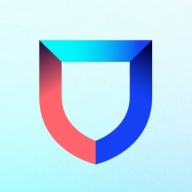


Lacework FortiCNAPP and XM Cyber are both cybersecurity platforms that compete in security management. XM Cyber seems to have the upper hand due to its proactive security posture despite Lacework FortiCNAPP's competitive pricing and support.
Features: Lacework FortiCNAPP provides cloud-native security with an emphasis on compliance, automation, and cloud workload protection. XM Cyber offers advanced attack simulation, risk management, and the ability to identify and mitigate vulnerabilities before exploitation.
Ease of Deployment and Customer Service: XM Cyber features an intuitive deployment model that requires minimal setup and robust customer service. Lacework FortiCNAPP has good customer support but a steeper learning curve due to its extensive features, making XM Cyber more appealing to organizations with limited resources.
Pricing and ROI: Lacework FortiCNAPP provides a flexible pricing structure that leads to quicker ROI with competitive setup costs, appealing to budget-conscious organizations. XM Cyber involves a higher initial investment but offers long-term ROI through effective risk reduction, balancing cost-effectiveness with security enhancement.
| Product | Market Share (%) |
|---|---|
| Zafran Security | 1.0% |
| XM Cyber | 1.1% |
| Lacework FortiCNAPP | 1.3% |
| Other | 96.6% |



| Company Size | Count |
|---|---|
| Small Business | 4 |
| Midsize Enterprise | 4 |
| Large Enterprise | 3 |
Zafran Security integrates with existing security tools to identify and mitigate vulnerabilities effectively, proving that most critical vulnerabilities are not exploitable, optimizing threat management.
Zafran Security introduces an innovative operating model for managing security threats and vulnerabilities. By leveraging the threat exposure management platform, it pinpoints and prioritizes exploitable vulnerabilities, reducing risk through immediate remediation. This platform enhances your hybrid cloud security by normalizing vulnerability signals and integrating specific IT context data, such as CVE runtime presence and internet asset reachability, into its analysis. No longer reliant on patch windows, Zafran Security allows you to manage risks actively.
What are the key features of Zafran Security?
What benefits can users expect from Zafran Security?
In industries where security is paramount, such as finance and healthcare, Zafran Security provides invaluable protection by ensuring that only exploitable vulnerabilities are addressed. It allows entities to maintain robust security measures while allocating resources efficiently, fitting seamlessly into existing security strategies.
Lacework FortiCNAPP provides robust cloud security, combining vulnerability management and multi-cloud insight with user-friendly controls, machine learning detection, and compliance support.
Lacework FortiCNAPP specializes in cloud security by merging machine learning anomaly detection with agent-based vulnerability management to offer detailed alerts and compliance reports. Its comprehensive approach allows continuous monitoring across AWS and Kubernetes, providing insights from an attacker's perspective. The platform offers automation and seamless Slack integration, facilitating collaborative and efficient cloud security management. Users value its ability to handle multi-cloud environments and scan IAC scripts, configurations, and compute nodes across AWS and GCP.
What are the key features?Organizations across sectors leverage Lacework FortiCNAPP for cloud security, focusing on compliance, security posture, and vulnerability management. It is widely used for monitoring AWS and Kubernetes environments, scanning IAC scripts, configurations, and securing compute nodes. It supports multi-cloud security posture management and log ingestion, enabling companies to maintain strong cloud infrastructures without dedicated security layers.
XM Cyber is a leading hybrid cloud security company that’s changing the way innovative organizations approach cyber risk. Our attack path management platform continuously uncovers hidden attack paths to your critical assets across cloud and on-prem environments, so you can cut them off at key junctures and eradicate risk with a fraction of the effort. This overcomes the big disconnect that security teams experience when they’re presented with endless alerts, yet can’t see which exposures impact risk the most, how they come together to be exploited by an attacker, or how to efficiently eliminate them. This approach is a complete game-changer, which is why some of the world’s largest, most complex organizations choose XM Cyber to help eradicate risk. Founded by top executives from the Israeli cyber intelligence community, XM Cyber has offices in North America, Europe, and Israel.
We monitor all Vulnerability Management reviews to prevent fraudulent reviews and keep review quality high. We do not post reviews by company employees or direct competitors. We validate each review for authenticity via cross-reference with LinkedIn, and personal follow-up with the reviewer when necessary.